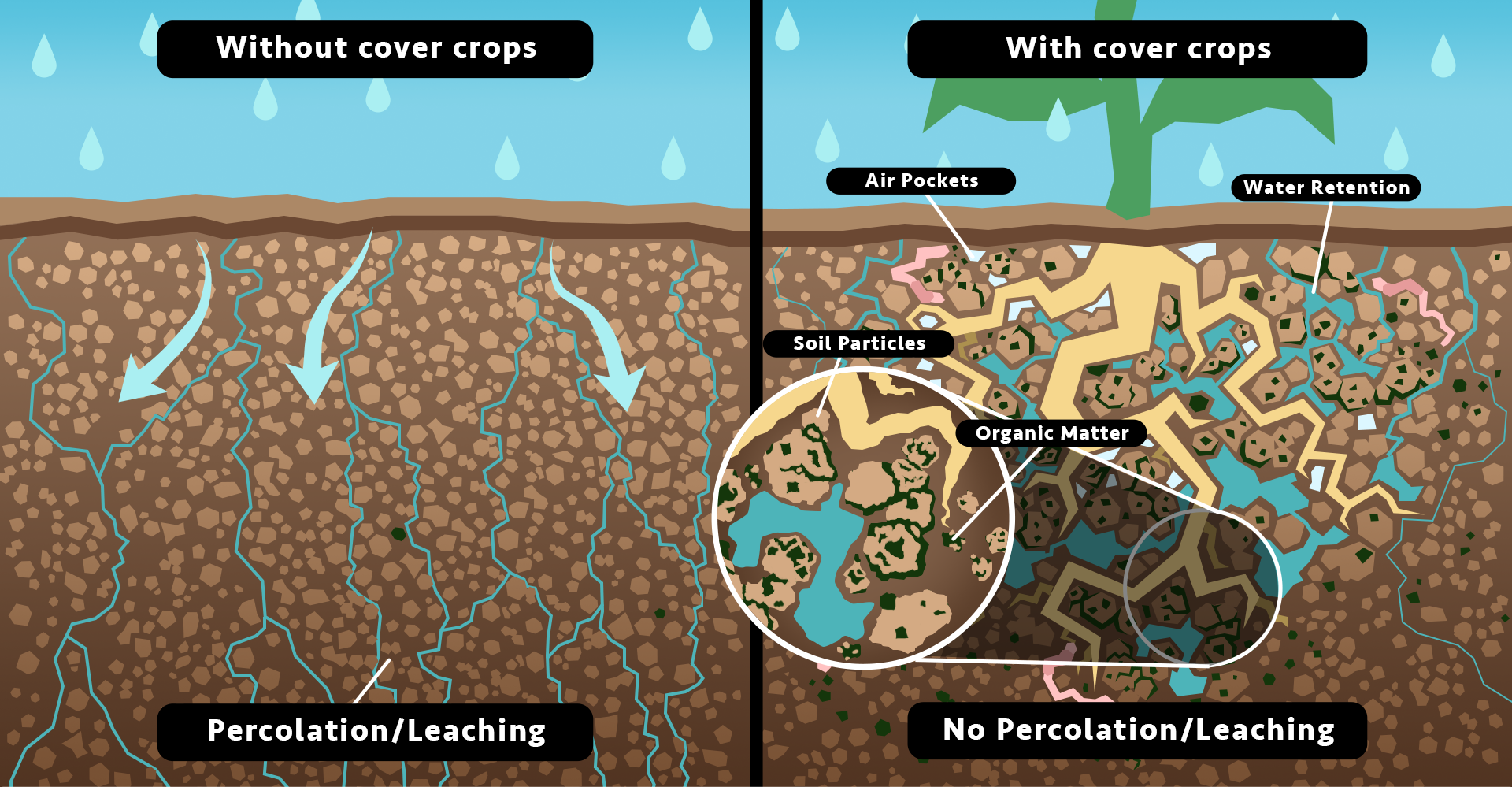Effects of Cover Crops on the Soil
Besides covering bare ground, cover crops bring a host of other benefits to farms, including improving soil health, enhancing water availability, and controlling soil erosion. They also help suppress weeds, pests and diseases, and increase biodiversity. Cover crops typically provide soils with seasonal protection from water and wind erosion and improve soil productivity. Above- and belowground biomass inputs from cover crops can add soil organic matter, improve soil structure, and minimize soil water loss from crop fields.
Regulation of soil carbon and nitrogen cycling with cover cropping.

A cross-section of soil with cover crops above. The diagram depicts plants using sunlight for photosynthesis and putting carbon and organic matter into the soil, where it decomposes with help from soil microbes, after which some nutrients leach further down in the soil while others are cycled back up to the root zone, where they are used by plants and emitted as carbon dioxide and nitrous oxide. The diagram also depicts how water and soil can run over the surface, causing runoff of water and erosion of soil. The diagram also depicts how root nodules on certain plants work with symbiotic microbes to fix nitrogen, which then is added to the nutrient profile of the soil. Both carbon and nitrogen generated by plant activities may be sequestered in the lower part of the soil.
Cover crops increase aggregation and soil water storage.

This diagram is divided into two sides. On the left side of the diagram, a cross-section of soil is depicted "without cover crops," showing water percolating quickly through the soil via a limited number of channels. Nutrients therefore leach down below the reach of plant roots. On the right side of the diagram, a cross-section of soil is depicted "with cover crops," showing water moving more slowly as it becomes trapped by roots, air pockets, and soil particles mixed with organic matter. This water retention allows plants to utilize water and reduces percolation and leaching of nutrients.
Movement & Storage of Water in Soils: Soils hold water differently, which affects how hard or easy it is for plants to take up water from the soil and how water moves through soils.
Soil microbial community regulates soil organic matter cycling and soil health.

This diagram shows a plant taking carbon dioxide from the atmosphere to produce leaves and plant litter, which goes into the soil and is decomposed with help from soil microbes, who then respire some amount of carbon dioxide back into the atmosphere, while also depositing mineral associated organic carbon (MAOC). At the same time, roots and rhizodeposits are contributing particulate organic carbon (POC) to the soil, which is added to MAOC that the soil microbes made. Together, these two types of organic carbon make up SOC (soil organic carbon). Also happening in the root zone, roots create air pockets among aggregates (clumps) of soil, which allow water to penetrate more slowly. Water moving more slowly through the soil helps the process whereby the plant and microbes create and retain soil organic carbon.